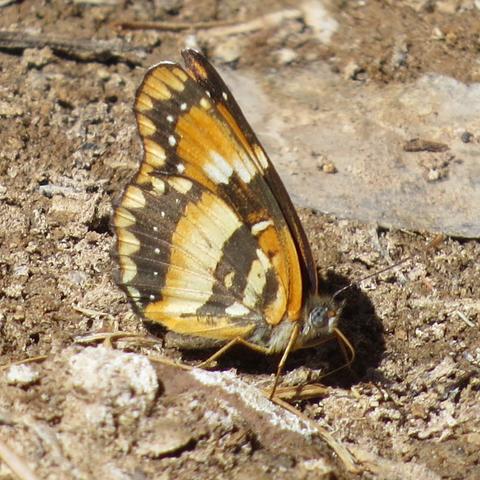Sighting 1335425
California Patch
Chlosyne californica
Observation date: July 20, 2021
Submitted by: Kenneth Cox
Specimen type: Photograph
Observation notes: Initially I was tempted to assign identification to Chlosyne californica (California Patch) based underwing pattern and coloration alone; however, this would be far east of its known distribution. Further and more importantly my tentative identification is not supported by acquaintance and lepidoptorist Dr. David Wagner, who identified it as C. lacinia (Border Patch), a variable species.
Status: Temporary Colonist
Verified by: stevecary
Verified date: January 16, 2023
Coordinator notes: Kenneth, I appreciate that you went to such trouble to confirm/refute the California Patch that our eyes tell us this is. Since there is no specimen in-hand, there is no way to conclusively prove that it is lacinia or californica. In September 2021, We had a handful of other NM reports that looked just like yours, so it is not a once-in-a-lifetime aberration or freak. I can also assure you that no such phenotype (lacinia or californica) has ever been documented from NM prior to late summer 2021. If you go to iNaturalist and search for California Patch sightings limiting your search to only the 2021 calendar year, you will find that they had quite a year. Dozens of sightings were reported from the Southwest, especially Arizona, right up to the NM border in SW NM. Then sure enough there are a couple others from NM itself, mostly from September 2021. Your July sighting may have been of the prior generation, parents of the September invasion. Sure, it is possible that many of these were weird lacinia, but why would they all show up in that year? Also, keep in mind that the version of lacinia that is typical of AZ and SW NM is ssp. crocale, which is essentially black and white with little to no orange pigmentation. very different from the Texas version of lacinia, which can be very orange. My conclusion, which cannot be proved or disproved without a specimen, is that California Patch had a breakout summer in its normal range and it send vagrants north and east and well into NM. You documented one of those strays. Which is terrific. I mean no disrespect to Dr. Wagner, who may very well be correct. Thanks for getting this interesting creature and conversation into BAMONA! Feel free to contact me at sjcary1@outlook.com if you wish to discuss this further. Steve Cary
Checklist region(s): United States, New Mexico, Catron County

